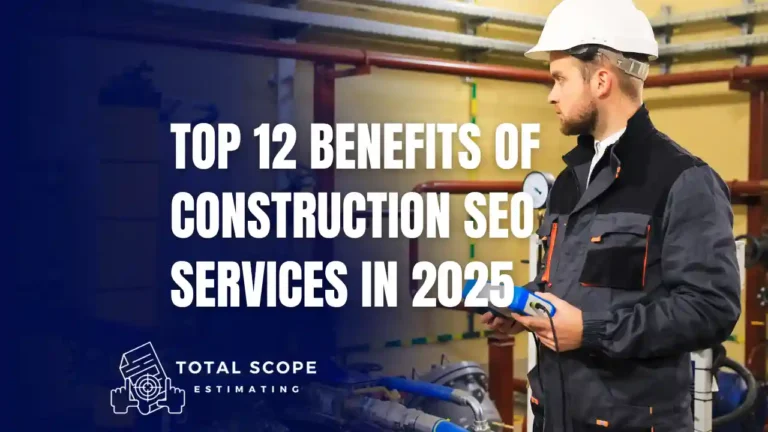Project managers are well aware of the critical method. This method refers to the long sequence of critical tasks that must be completed to complete the project on time. Each task is essential, and any delay in completing it can delay the entire construction project. A CPM schedule employs the critical method while scheduling the project.
Utilizing a CPM schedule enables the project managers to look deep into the planning phase of the construction project. And have a detailed analysis of what is essential to do first and what can be skipped if necessary. It helps keep the project on track and complete it within the timeline. Therefore, it is a must for all project managers to stay on a Critical Path Method schedule in their construction tools.
Knowing what a Critical Path Method schedule is and how it works requires deeply delving into its components. In this article, we will guide you on what a CPM schedule is? And what benefits can be acquired by its application in various fields.
Global Definition Of CPM Schedule
A CPM (Critical Path Method) schedule is a project management timetable or schedule typically presented in graphical form. It comprises a sequence of individual tasks that are part of the entire construction project. It illustrates the time that each task will take to complete. It also presents the longest amount of time that all the individual functions can take collectively, thus representing the completion time of the entire construction project.
Applications Of the Critical Path Method Schedule
A Critical Path Method schedule is a planning tool that can be used for streamlining the construction project effectively. It helps the project managers to evaluate which tasks need to be done and which to avoid. It helps in the planning phase of the construction plan, resource management, and allocation, and during the scheduling of tasks.
Project managers and contractors can use the CPM schedule for the existing and future tasks. A schedule can help them better evaluate the construction project’s expectations and actual progress. The data gathered in the existing projects can help them to plan future projects more accurately.
It not only helps in the project’s planning phase but also helps in resource allocation and management. It enables the project managers to efficiently distribute the resources by giving them the idea of which resources must be deployed, and who is the right time and the right person to distribute them to.
But even the best schedules can make mistakes during the construction project. Project managers need to avoid these issues to align their construction projects. They help avoid these bottlenecks by telling them which tasks can be run in parallel in the construction project and which cannot be run simultaneously during the construction.
We have covered another in-depth, detailed guide, you might like too: Construction Estimating 101
What Should Be Included In the CPM Schedule?
To know how to create a CPM schedule, you must understand what it comprises, so you can have a deep understanding of the CPM schedule. They are described as follows:
1. Individual Tasks
It refers to the single task in an extensive sequence of tasks that must be completed to deliver the project. It must be viewed in reference to other tasks to get a broader project picture.
2. Earliest Start Date
As the name suggests, it doesn’t refer to the earliest start date of the project as a whole but the earliest start date of the initial individual task. But ultimately, the earliest start date of the initial individual task becomes the start date of the whole project.
3. Latest Start Date
It is a primary component of the CPM schedule and must be taken at face value. It refers to the latest date at which the activity of any individual task can be started.
4. Earliest Finish Date
It is another primary component that is determined by seeing the earliest and latest start dates of any individual task. It refers to the earliest date an activity can be completed.
5. Latest Finish Date
This factor refers to the latest date an activity can be completed by determining all the factors so it doesn’t affect the timeline and the progress of the construction project as a whole.
6. Crash Duration
It refers to the absolute shortest period that an activity can take to complete. If due for some reason, the crash duration of any tasks is not available, the project managers can consider using the consideration time, costs, and quality of the task.
7. Identification of Task Dependencies
This component refers to breaking down or delineating the correlations and interrelationships between tasks. There are usually four types of dependencies:
- Finish to Start
- Finish to Finish
- Start to Finish
- Start to Start
8. List of Project Milestones
This refers to the progress phase during construction, such as the start or finish of the project.
How To Make A CPM Schedule?
Now, we have gone through all the terms of the schedule. Now, we can focus on learning how can create a CPM schedule. This can be done in a sequence of seven steps. Following these simple steps can help you manage your construction project well and put you on a competitive edge. Here are those steps:
1. List all your project tasks
Before you start the construction project, you must list all the tasks in your construction project. A Work Breakdown Structure (WBS) is a tree diagram that helps you list all the project tasks and the tasks underlying them. The primary output is on the top, and all the other sub-tasks are listed hierarchically. In this way, you can efficiently estimate all the tasks in your project.
2. Estimate start and finish dates
Once you have identified all the tasks in your construction project, the next step is to estimate the start and finish dates of the tasks. You will not just figure out the time required to complete the project, but also try your best to determine the earliest and latest finish and start dates. You will need to meet your project team to estimate the start and finish dates. They are skilled and present on-site. Therefore, their advice is indispensable.
3. Determine the slack for each task
Slack, also known as float, is the time that can be delayed in any activity without having a negative impact on the next task and the construction project as a whole. Those tasks that have slack can be delayed for some time, hence, they are called non-critical tasks. Critical tasks don’t have slack and cannot be delayed in the CPM schedule.
4. Identify task dependencies
After determining the slack for each task, the next step is to identify the task dependencies. As the name suggests, task dependency correlated with the next step. There are four types of task dependencies, and it is essential to identify the dependency each task is associated with. This will help to manage the entire construction project more effectively.
5. Draw a CPM schedule
Draw a CPM schedule, perform critical path analysis, and you need to draw a CPM diagram. This type of network diagram will take time and a lot of manual work (unless, of course, you use project management software). Be careful. Doing this manually is more likely to produce errors that can mess up your results.
6. Identify the critical path
After you have drawn a CPM diagram, you can identify the critical path. As described above, it will comprise activities with no slack. The critical path is the activities on your CPM diagram that cannot be delayed. It is the most prolonged duration of the project.
7. Finish your CPM
After you have identified the critical path, it is time to finish your CPM schedule. It has become easy for you to distinguish between the critical and non-critical tasks. You can also identify the task dependencies. You can finalize your schedule now.
But you are not done yet. You need to review your schedule and revise it as the construction project progresses. Any delays or problems in the CPM schedule can cause bottlenecks. You need to keep updating the CPM schedule as the construction project progresses.
Conclusion
Understanding the CPM schedule is essential to navigating your construction project to success. But not everyone has the expertise to handle it effectively. At Total Scope Estimating, we offer the most professional team in the town that can handle all your Critical Path Method scheduling for your construction project.





